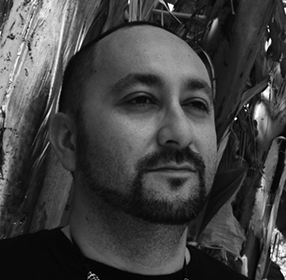Detour of the World War II Valor in the Pacific National Monument
Every year, more than a million tourists march
through military museums, memorials, and ghostly
battleships as “Remember Pearl Harbor” echoes
with patriotic fervor. But what if they learned how
to pronounce, “Puʻuloa,” the Hawaiian name for this
sacred place, where pristine watersheds once flowed
to the sovereign sea, once birthed an estuary teeming
with spawn, fish, and oysters. What if tourists praised
Kaʻahupāhau who, in the form of a shark, protected
the harbor for generations? What if they recognized
the reciprocity between sugar profits, white men,
and the sharpened edge of a bayonet constitution?
Would they recite every name on the Kūʻē Petition
and finally hear the true history of the overthrow and
illegal annexation? Would January 17, 1893, live
in infamy? What if tourists were given a free map
of PACOM (Pacific Command)? Would they feel
its eyes and tentacles surveilling and strangling
36 countries and half the world’s population?
What if they hiked to all 700 toxic Superfund sites
in Pearl Harbor, and enjoyed a picnic of wild caught
seafood from these contaminated waters? What if
this monument of valor instead condemned violence?
What if national and state parks didn’t simply preserve
the myth of American innocence, but actually told
the truth about American empire? Would you offer
prayer and respect to the ancient bones buried here
under layers of soil and story? Would you give
more than an apology? Would these stolen places
finally return to their native stewards and descendants.
Maybe then, these tributes to colonial power
will finally become healing testaments of peace.
Copyright © 2016 by Craig Santos Perez.This poem was commissioned by the Academy of American Poets and funded by a National Endowment for the Arts Imagine Your Parks grant.
"In 2013, I taught a Pacific Poetry graduate course at the University of Hawaiʻi, Mānoa. One of the major themes of Pacific Poetry is militarization and its impacts on native islanders and the environment. My class was able to attend a 'detour' of military sites on 'Oahu, which included Pearl Harbor. The 'detour' is an educational tour led by two demilitarization activists and scholars, Terri Kekoʻolani and Kyle Kajihiro. Walking through Pearl Harbor with them, we learned the deeper histories and politics of Pearl Harbor, as well as its Hawaiian name: 'Ke Awalau o Puʻuloa.' My poem is a textual detour that reveals hidden layers buried beneath the colonial narrative of America's national parks and monuments."
—Craig Santos Perez

